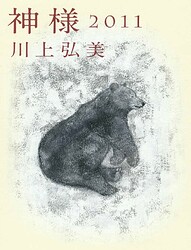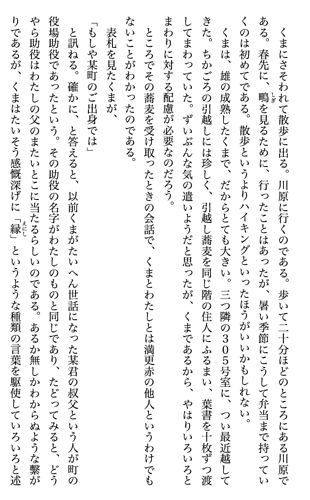Dick is person name and can also mean other thing. Without context how do you know which? Why is there a need to use such name for a sentence in that potentially create more issue?
Firstly, I apologize for the poor experience you’ve had. When the staff answer questions on the forums, we try to answer in a way that assumes that any user could potentially read the answer, rather than just the person asking the question. Because of this, we try not to leave any gray area of ‘oh I thought this was right but I guess it’s wrong’, when someone apart from the original poster is reading the response. We never know what one person is struggling with compared to another.
When I said that there is nothing wrong with the translation, I meant that the current interpretation is perfectly correct in certain situations, and that the クマ that is in it very well could be either a person, or a real bear, or even a stuffed animal. Being unsure about the context and wondering whether your translation or interpretation is correct or not is an important part of learning, and something we feel will help users in their pursuits.
Dude, chill out! Asher already acknowledged that the sentence in question might be confusing, even though it is technically correct, and that he would change it to be less confusing, so why are you being so aggressive towards him?
Take the following sentence: “Chodzę z kotem.”
A correct translation of this could, in fact, be “I walk with my cat.” But where is “my” on there? Literally, the words used there are “(I) walk”, “with/of/from” “cat (instrumental)”. In context, it could mean that you walk with your cat in your arms, that you walk alongside your cat, that you walk with someone nicknamed cat, perhaps it means something completely different with certain innuendo that we have no access to. Would translating such a sentence with “my cat” be technically wrong? (Mind you though, I’m not a native speaker of Polish, haha.)
Perhaps the issue at hand is that your command of English doesn’t map to the expected nuance of the translation? Have you considered that perhaps that your expectation for the translation doesn’t account for certain possibilities when dealing with context-free sentences?
There are plenty of “weird” sentences here on Bunpro, when I see them I just laugh, it’s part of the fun. Some people just like finding things to complain about unfortunately😅.
There is nothing wrong with saying “I walk with my bear”
Just like in the climax of the movie ‘A Time to Kill’: now imagine ‘私’ is Christopher Robin.
This is where my question come from if based on English.
Do you walk with a wild animal? Or does Japanese keep bear as pet?
But because it is another language which might have different rules. Different language has different interpretation like certain part can be used for living thing and non living things. Example, Is tree considered as living thing or not for japanese or othe languages.
The point is whether can it be used with animal.
It doesn’t matter if the person is walking with a wild animal or if this person keeps a bear as a pet. It does not matter at all. You are getting hung up on the wrong things.
The translated sentence is a valid sentence, the scenario in which the sentence would be said does not matter.
Precisely, different language have different way and rules of usage which is something confusing and need to figure out.
The thing is whether it can be used with animal?
The definition state “people or object”. In this case, it did not state animal or does the animal belong to object or people in this case?
When と is used as ‘with’, it means that both/all people or objects are equally involved in the action. However, に highlights that one person is the target (destination) of an action, so will result in something sounding a lot more one sided.
Yes some feels weird if we use our native language to interpret. So it get confusing whether it can be apply the way or not?
Ah now I see where the confusion is. I think you have a valid point. The issue isn’t really with the sentence although I can see how it came to the sentence. It’s more about how と is said to work in the grammar point.
The “people or object” part of the definition given is poorly worded. I think it makes more sense if you read it as
“people and objects”
Because the point itself doesn’t care which it is so long as they are nouns.
" Noun (A) + は + Noun (B) + と + Verb"
”私” is a noun and ”クマ” is a noun and “歩く” is a verb.
It’s the way they defined that could need to be changed, but the sentence itself does work because it follows the structure
P.S. Fair warning I’m a learner also so anything I say can be wrong and you should seek additional verification
The name can be used in any way for any story or plot. Just that this is meant for learning especially it is used for beginner level where people might get confused.
Yes, i previously learnt that japanese have different way of classify living things and non living thing for different grammar usage. So it gets confusing.
For English, tree are consider as living thing but for japanese they consider it as not living thing and need to use ある.
For example がいる
Because the things being described in these examples are considered to be alive (or operated by something that is alive), いる is the verb that will be used. ある is used for non-living things.
I believe ある is more so much used for non-living things AND inanimate things. So it’s less that they don’t consider trees living things. But more for ある is for things that don’t move on their own and that includes non-living things and also inanimate things such as trees.
I could be wrong and I’ve seen the description that you are referring to. But I just think it’s another bad way of describing it. I think of it more like
いる is for things that can think and act on their own
ある is for everything else, regardless of if it is alive or not.
That being said 歩く does not apply to this because this is not a grammatical device this is a word in itself that happens to sound like the grammatical device.
Thanks for info. I always remember it as tree are exception case for living things. it is confusing as it is while learning.
Imagine learning this grammar point and having a sentence " 木がいる " with translation “tree is (exist)”. A person named 木 is (exist).
Book recommendation:
First page of said book, check the first sentence.
Quoting from Read Japanese Literature Podcast on a previous book by the same author (bold face is mine)
Kawakami’s 1993 “God Bless You” opens in medias res—in the middle of the action with no explanation—“The bear invited me to go for a walk to the river, about 20 minutes away.” This is a real, full-grown, male bear. And he has moved into apartment 305, three doors down the hall from the narrator. This is magical realism—the kind we talked about a few episodes ago. Magic that coexists along with the every-day. No explanation whatsoever. The bear has also made the old-fashioned gesture of presenting the narrator with “moving-in noodles” and packets of postcards.
Being pedantic here, but the bold part is a partial summary of what the story says given that the information provided is actually sentences apart from each other. For example , the first sentence says, “I was invited to go out for a walk by a bear.” Second sentence, “We’re going to the riverbank.” Third sentence, “The riverbank is a place around 20 minutes away by foot.” Later on the narrator mentions that the bear is big because he’s an adult bear, etc, etc.
However, your point still remains. In this story, the bear is like a person, that speaks and has a rational mind, which could’ve been one way to interpret the sentence in the BunPro example.
Anyway, just clarifying things for anyone who might not be able to read the story and might be wandering what it actually says.
Well technically the lack of an article would imply them being a person, though the lack of capitalization makes it ambiguous as in that case it would just be a typo, though it is also a stereotypical mistake made in English by foreigners that lack determiner based grammars; so, really your point is not as clear as you may hope it would be.


